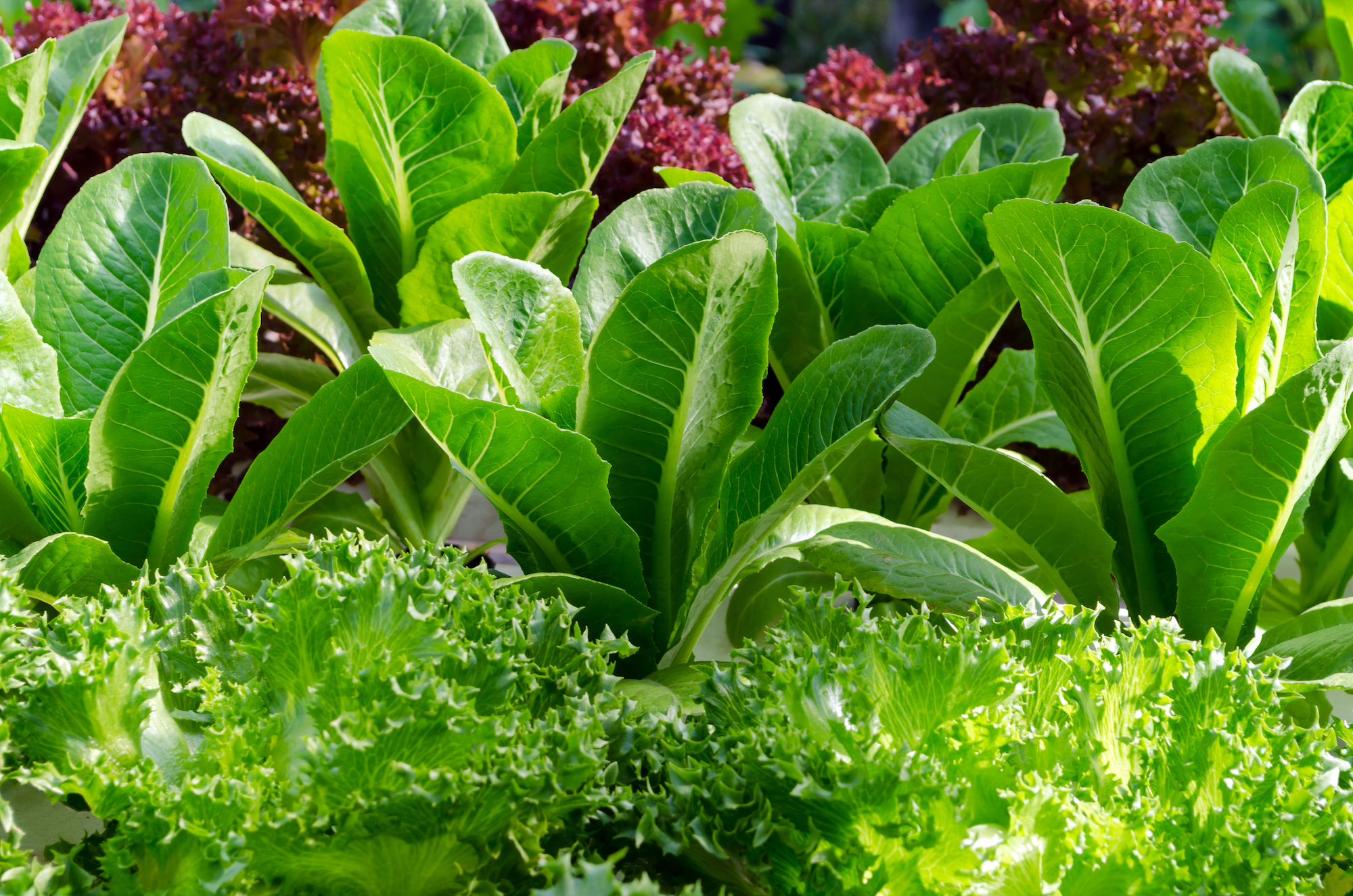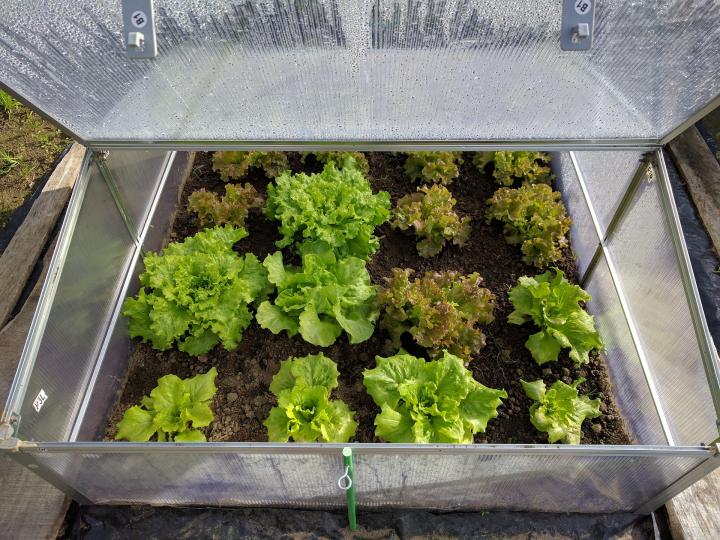
Grow crisp, tasty lettuce with ease—from seed to salad bowl.
The Almanac Garden Planner - Use It Free for 7 Days!
Plan your 2025 garden with our award-winning Garden Planner.
Types
Some of our favorite varieties include:
- Crisphead: ‘Great Lakes’, ‘Ithaca’, ‘King Crown’, ‘Mission’, ‘Summertime’
- Romaine (Cos)/Butterhead: ‘Burpee Bibb’, ‘Cosmo Savoy’, ‘Green Towers’, ‘Little Gem’, ‘Paris White Cos’, ‘Parris Island’, ‘Valmaine’
- Loose-Leaf: ‘Black Seeded Simpson’, ‘Green Ice’, ‘Ibis’, ‘Lollo Rossa’, ‘Oak Leaf’, ‘Prizehead’, ‘Salad Bowl’, ‘Slobolt’
- Red Leaf: ‘New Red Fire’, ‘Red Sails’, ‘Ruby Red’ (Not recommended for hot weather areas; the red pigment absorbs more heat.)
…But there are so many more types of lettuce to explore! What are your favorites?

Cooking Notes
Lettuce makes the perfect base for any number of salads. Try these eight great salad recipes with your harvest!
ADVERTISEMENT
I have found storing lettuce and celery in tin foil is way, way better than any other method for storage
May I know who is the author of the article in lettuce?
I have grow lights for the first time and was wondering if I could successfully grow lettuce now, inside. It is February 5 here in CT. Thanks.
Yes you can. I am located in southwestern Ontario and grow lettuce and herbs year round under grow lights. Just incorporate an oscillating fan on very low to blow over the plants for about 30-40 mins each day
Thank you. I’ll try it!
I bought transplant lettuce at the grocery store (established plants, ready to plant). They did well after I planted them in the planters, and doubled their growth. So, I decided to harvest it. But, I cut almost all of the leaves, including the ones in the center. Did I kill my lettuce plants or will they regrow? We live in an area in Europe where the weather is between 40’s, for lows, and 50’s for highs all day....Thank you for your insight!
It depends how you harvested. If you cut off all the leaves with scissor at soil level, it will grow back in a few weeks. You may even get a third cutting. This “cut and come again” method is actually our preferred way to go. Obviously, if you pulled the whole head or any of the roots, that’s it! Seed more lettuce.
Everyone has been telling me that Lettuce should be harvested before maturity otherwise it will bolt/ go bitter.
But how do i make out 'before maturity' stage?
is there a rule of thumb, or a day calculation, or size calculation or some signs in leaves etc. to tell me that this is ripe for harvesting but its not yet mature?
You can start harvesting baby greens when they are 4 to 6 inches in height (about 25-40 days from planting). When you top harvesting is a judgemental call. The leaves will taste bitter and the plant will look weak and no longer be producing leaves.
How you harvest is up to you. You can use scissors and cut your lettuce off at the soil. And then the plants will produce new leaves from the base and can be harvested a seconod time in 3 to 4 weeks. Or you can plant so that each head is 4 to 6 inches apart and harvest outer leaves or entire plants.
Lettuce is healthier than you realize. It also provides Vitamin-A and Vitamin-K. It also has small amount of many other healthy nutrients. It is low in fiber and it has high water content.













